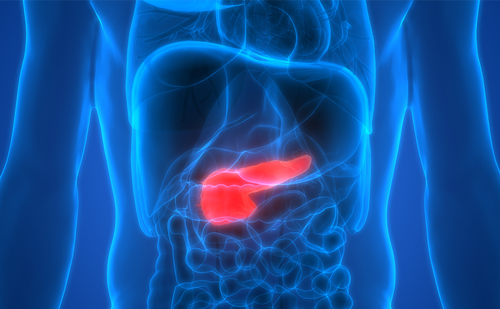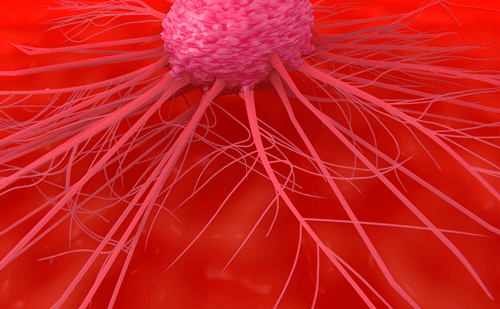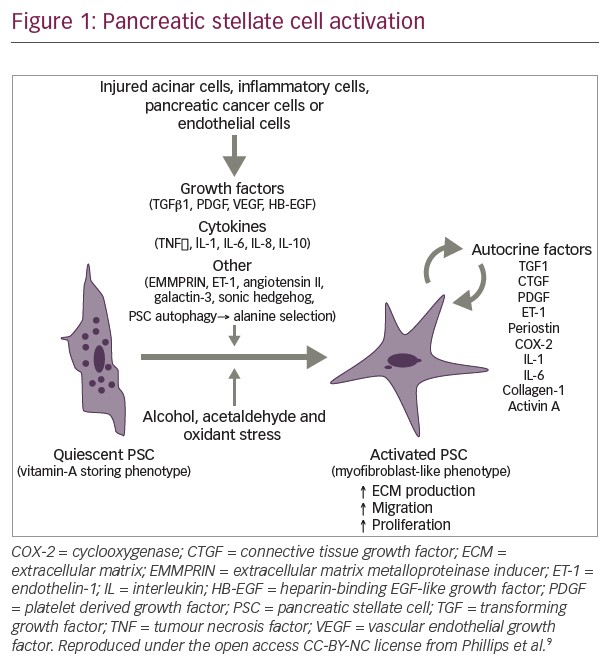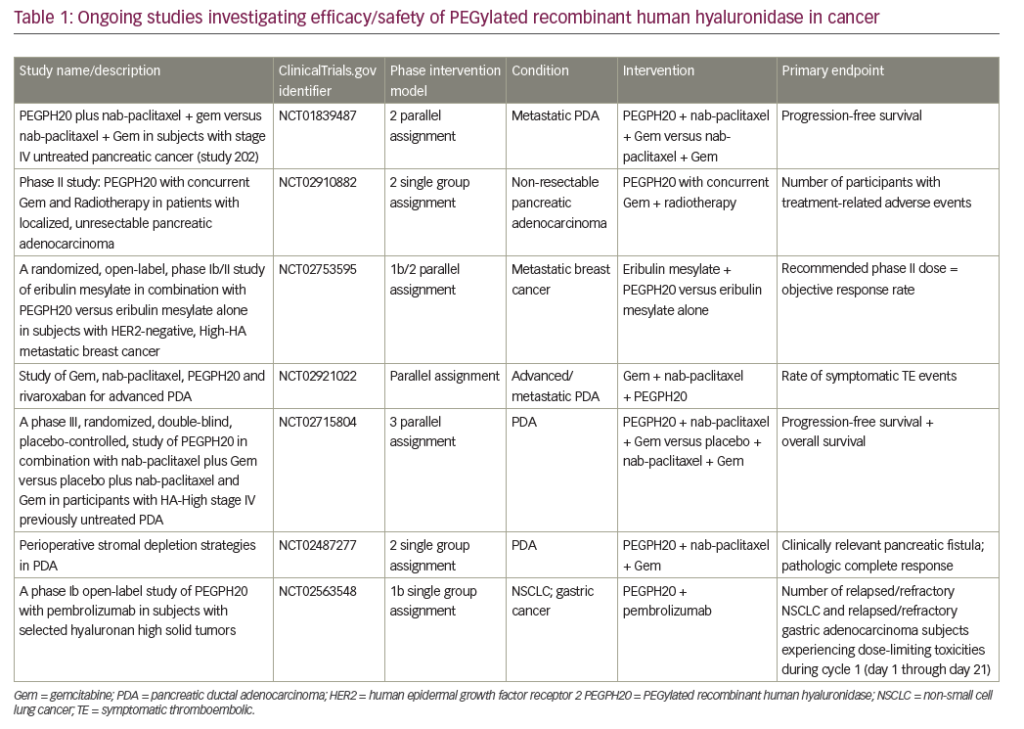Introduction
Neuroendocrine gastroenteropancreatic (GEP) tumours constitute less than 2% of all gastrointestinal (GI) malignancies. The incidence of the largest group of patients, those with small intestinal carcinoid tumours, is two to 2.4 per 100,000 inhabitants. The true incidence is probably underestimated due to sometimes vague clinical presentation and low awareness among physicians. The incidence in autopsy series is significantly higher at 8.4 per 100,000 inhabitants.
Introduction
Neuroendocrine gastroenteropancreatic (GEP) tumours constitute less than 2% of all gastrointestinal (GI) malignancies. The incidence of the largest group of patients, those with small intestinal carcinoid tumours, is two to 2.4 per 100,000 inhabitants. The true incidence is probably underestimated due to sometimes vague clinical presentation and low awareness among physicians. The incidence in autopsy series is significantly higher at 8.4 per 100,000 inhabitants.
Although neuroendocrine tumours can appear at all ages, those of the lung, mediastinum and the GI tract are, in general, age-related, with the highest incidence from the fifth decade and upwards. Exceptions to this are the carcinoids of the appendix, which occur with the highest incidence below 30 years of age. Some of the neuroendocrine tumours of the GI tract are part of inherited diseases such as multiple endocrine neoplasia type 1 (MEN-1), neurofibromatosis type 1 and von Hippel-Lindau’s (VHL) disease. MEN-1 is associated with parathyroid hyperplasia/hyperparathyroidism (90%), pancreatic endocrine tumours (50% to 80%), pituitary adenomas (30% to 40%) and adrenal cortical adenomas (10% to 15%). A specific deletion on chromosome 11q13 harbouring the MEN-1 gene is the genetic background of the disease. This gene encodes a protein called menin, which acts as a tumour suppressor.
VHL syndrome is an autosomal-dominant neoplastic syndrome characterised by haemangioblastomas of the central nervous system (CNS), retinal angiomas, renal cell carcinomas, pheochromocytomas and neuroendocrine pancreatic tumours. The VHL gene has been mapped to chromosome 3p25.3 and the gene is a tumour suppressor gene, implying that loss of function or inactivating mutations of this gene are associated with tumour formation.
The main two groups of neuroendocrine GEPtumours are so-called carcinoid tumours and endocrine pancreatic tumours. The carcinoid tumours are divided into foregut tumours, which are mainly located in the lung, thymus and gastric mucosa and duodenum; midgut carcinoids (the second group), which are located in the distal ilium and jejunum; and, finally, hindgut tumours, which are located in the distal colon and rectum.
Approximately 40% to 60% of carcinoids are located in the midgut area, 25% in the foregut area and the rest in the hindgut. A specific clinical syndrome related to midgut carcinoid tumours is the carcinoid syndrome, including flushing, diarrhoea, carcinoid heart disease, bronchial constriction and high levels of urinary 5- hydroxyindole acetic acid (5-HIAA). Although this syndrome is mainly seen in midgut carcinoids, an atypical syndrome can be seen in patients with lung carcinoids, due to histamine production.
Endocrine pancreatic tumours develop within the pancreas and can be divided into functioning and nonfunctioning tumours. Functioning tumours constitute approximately 60% and include well-known clinical syndromes, such as Zollinger–Ellison (due to the secretion of gastrin), hypoglycaemic syndrome (related to insulin/pro-insulin overproduction) and Verner– Morrison syndrome, related to high circulating levels of vasoactive intestinal polypeptide and glucagonomas syndrome (due to the secretion of high concentrations of glucagon). The non-functioning tumours are secreting agents that do not usually cause any distinct clinical syndrome but merely present as ordinary GI cancers. These tumours are usually large and metastatic at diagnosis. They might secrete chromogranin A, pancreatic polypeptide, peptide YY (PYY) and other hormones that do not cause any hormone-related clinical symptoms.
Diagnostic Procedures
Correct histopathology is very important in these patients, since the prognosis is significantly better for many of these tumours compared with regular cancers. Patients with non-functioning endocrine pancreatic tumours may sometimes be particularly misdiagnosed with pancreatic cancer, which has a significantly poorer prognosis. Biopsy material, preferably surgical or course needle biopsy specimens, are investigated with immunohistochemistry for different neuroendocrine markers, such as antibodies to chromogranin A, neuron specific enolase (NSE) and synapthophysin. These are routine investigations and can be supplemented by the analysis of different hormones in relation to clinical symptoms. If a patient presents with a carcinoid syndrome one should stain for serotonin and if the patient presents with Zollinger–Ellison syndrome one should stain for gastrin. The proliferation capacity of the tumour is of value for therapeutic decisions and the proliferation marker Ki67 or the MIB-1 antigen are very important. Another method is the simple counting of mitotic figures per 10 high power fields under the light microscope.
In 2000, a new World Health Organization (WHO) classification was established for neuroendocrine GEP tumours. They are now classified according to classical structural criteria, combined with proliferation index Ki67, into well-differentiated endocrine tumours (proliferation index (PI) less than 2%), welldifferentiated endocrine carcinoma (PI more than 2% but less than 15%), poorly differentiated endocrine carcinoma (PI more than 15%), mixed exocrine– endocrine tumours and tumour-like lesions.
A benign insulin-producing tumour belongs to the well-differentiated endocrine tumour group, whereas patients with a carcinoid syndrome and metastatic midgut carcinoid might be classified as a welldifferentiated endocrine carcinoma in the new classification.
Biochemical Diagnosis
To establish the diagnosis of neuroendocrine tumours the demonstration of elevated levels of peptides and biogenic amines in the circulating blood is essential. Plasma chromogranin A is a general tumour marker that increases in nearly all types of neuroendocrine tumours. No clinical symptoms can be related to the production of chromogranin A. Other general tumour markers are plasma pancreatic polypeptide (PP) and human chorionic gonadotrophin alpha (HCGα) subunits. For each tumour type with characteristic clinical symptoms, measurement of specific markers such as gastrin, insulin/pro-insulin, vasoactive intestinal polypeptide (VIP), glucagon and urinary 5-HIAA should be performed.
Radiological Diagnosis
Computed tomography (CT), magnetic resonance imaging (MRI) and ultrasonography (US) detect less than 50% of neuroendocrine small gut or pancreatic tumours, but CT and MRI have a higher sensitivity in visualising liver metastases larger than 1cm to 2cm. Somatostatin receptor scintigraphy (SRS) is based on the presence of somatostatin receptors in 80% to 90% of neuroendocrine tumours. Tumours expressing somatostatin receptor subtypes 2 and 5 are diagnosed and localised with this method. Tumours lacking these receptors, such as benign insulinomas, can be negative.
The method is a whole-body investigation enabling staging of the disease and so guiding clinicians in their therapeutic decisions. The method should always include single positron emission computed tomography (SPECT).
Positron emission tomography (PET) is a functional imaging technique that can reflect tumour metabolism. Short-lived positron emitting isotopes such as 18F and 11C are used to label substances of interest. Fluorodeoxyglucose PET (FDG-PET) is being used as an imaging procedure in common cancer, reflecting increased metabolism of glucose in tumours.
Unfortunately, highly differentiated neuroendocrine tumours do not show increased uptake of FDG. A specific tracer, 5-hydroxytryptophan (5-HTP), a serotonin precursor, has been labelled with 11C and recent studies have shown increased uptake in neuroendocrine tumours. The method is more sensitive than SRS and CT in detecting small neuroendocrine tumours.
Endoscopic ultrasonography (EUS) combines the techniques of flexible endoscopy with US. Tumours, particularly in the pancreas and duodenum, are identified with a sensitivity and specificity of about 80%. Furthermore, it is possible to perform a USguided fine needle aspiration of tumours and regional lymph nodes, which may increase the accuracy.
Endoscopic investigations such as bronchoscopy and gastroscopy are of value in patients with suspected lung or gastric neuroendocrine tumours, respectively. A colonoscopy with biopsies might be needed for the diagnosis of neuroendocrine tumours in the lower GI tract.
Therapy
Surgery is the only way of curing a patient with a neuroendocrine tumour. A majority of patients with neuroendocrine tumours of the GI system present with metastatic disease. Cytoreductive procedures have been a major cornerstone in the treatment of malignant neuroendocrine tumours, including debulking and bypassing procedures facilitating the medical treatment. Furthermore, new hormone blocking agents (somatostatin analogues) have also facilitated surgical procedures and reduced the risk of carcinoid crisis and other severe events during surgery. Currently, more aggressive surgery has emerged with debulking, laser treatment or radiofrequency ablation and embolisation of liver metastases. Liver transplantation may be considered in young patients in whom all extrahepatic tumours and metastases are previously removed and a follow-up does not visualise recurrence of extrahepatic tumour tissue. The long-term effect of liver transplantation has to be shown since a majority of the patients present recurrent disease within months to years after the transplantation.
Embolisation of Liver Metastases
Selective embolisation, alone or in combination with intra-arterial chemotherapy (chemoembolisation), is a widely performed procedure to reduce clinical symptoms and liver metastases. Selective embolisation of peripheral arteries induce temporary ischaemia and the procedure can be performed repeatedly. The objective response rates have varied between 30% and 70% of significant tumour reduction. This procedure can be performed at any stage during the clinical course to facilitate concomitant medical treatment.
Somatostatin Analogues
Medical treatment includes somatostatin analogues, alpha interferon and cytotoxic drugs. Somatostatin analogues have been in clinical use for the treatment of neuroendocrine tumours since the mid 1980s. Somatostatin analogues are synthetic somatostatin derivates, with structure and activities similar to those of native hormone somatostatin (containing 14 amino acids) but with a significantly longer half-life and duration of action than the native substance.
Somatostatin analogues bind to somatostatin receptors; currently, five subtypes of somatostatin receptors have been identified. Currently available somatostatin analogues bind to receptors 2 and 5 (SST2 and SST5) with high affinity and with lower affinity to receptor subtype 3 (SST3). The somatostatin analogues can exert cytostatic actions via cell-cycle arrest, inhibition of angiogenesis and effects on the immune system. Somatostatin analogues can induce apoptosis, particularly at high doses.
Octreotide and lanreotide are clinically available somatostatin analogues. Both of them exist in longacting formulations – Sandostatin LAR® and Somatuline Auto-Gel. The dose of octreotide longacting release (LAR) varies from 10mg to 30mg up to 60mg, every four weeks. The dose of slow-release lanreotide ranges from 60mg to 120mg, every four weeks. There is also a short-acting octreotide with standard doses at 100μg to 500μg three times daily.
With somatostatin analogues, symptomatic release is achieved in more than 60% of patients and biochemical responses in up to 70% of patients, but significant tumour response in only approximately 5% of patients. In progressive disease, tumour stabilisation has been observed in 30% to 50% of patients with a duration of stabilisation ranging from two to 60 months. Single patients have been stabilised for more than 10 years.
Somatostatin analogue treatment is the primary medical treatment for patients with symptoms related to neuroendocrine GEP tumours. For patients with insulinomas and gastrinomas, these agents can be used as second-line or third-line medical treatment. They can also be considered for asymptomatic patients with progressive disease, excluding aggressive tumours. At present, the idea that somatostatin analogues should also be considered for asymptomatic patients with stable disease is controversial. The most relevant adverse effect is the development of gallstones, because of inhibition of cholecystokinin release, which postprandially induces emptying of the gallbladder. Up to 60% of patients under long-term treatment may develop sludge in the gallbladder but fewer than 10% clinically significant gallstones. Other rare adverse events include pain at injection site, hypoglycaemia or hyperglycaemia, rash, alopecia and fluid retention.
Alpha Interferon
The cytokine alpha interferon was introduced in the therapy of midgut carcinoids in the early 1980s. The mechanism of action is a direct effect on the tumour cells by blocking the cell cycle in the G1/S-phase, by inhibiting protein and hormone synthesis and by antiangiogenesis through inhibition of angiogenic factors, such as basic fibroblast growth factor (b-FGF) and vascular endothelial growth factor (VEGF) and their receptors. It also has an indirect effect through stimulation of the immune system, particularly T-cells, natural killer (NK)-cells, macrophages and monocytes. Currently, recombinant alpha interferons are also available in long-acting forms, pegylated interferons such as Peg-Introna® and Pegasys®. The dose should be individually titrated in each patient. The leukocyte count could be of some guidance, aiming at a reduction of the blood leukocyte count to about 3 x 109/L. Usually, the dose of regular alpha interferon should be three to five million units, three to five times per week subcutaneously; the precise dose of pegylated alpha interferon has still to be established in forthcoming studies, but doses of 80μg to 150μg per week subcutaneously could be feasible. The average response rates according to WHO criteria are: symptomatic responses in 40% to 60% of patients, biochemical responses in 30% to 60% and tumour reduction in 10% to 15%. Tumour stabilisation is noted in 40% to 60% of patients with midgut carcinoids, lasting for long periods of time (more than 36 months). Single patients have been stabilised for 10 to 15 years. ■










